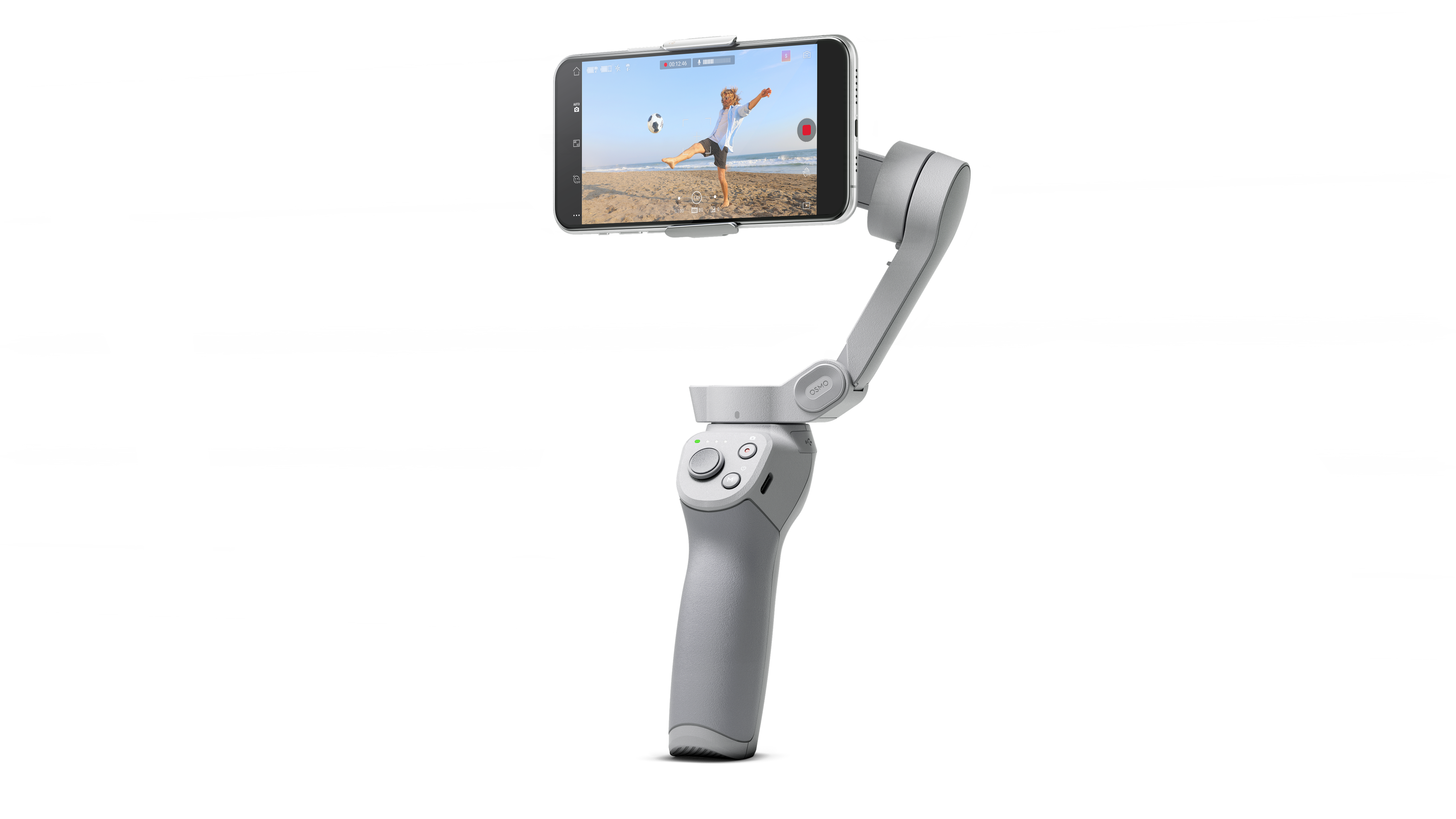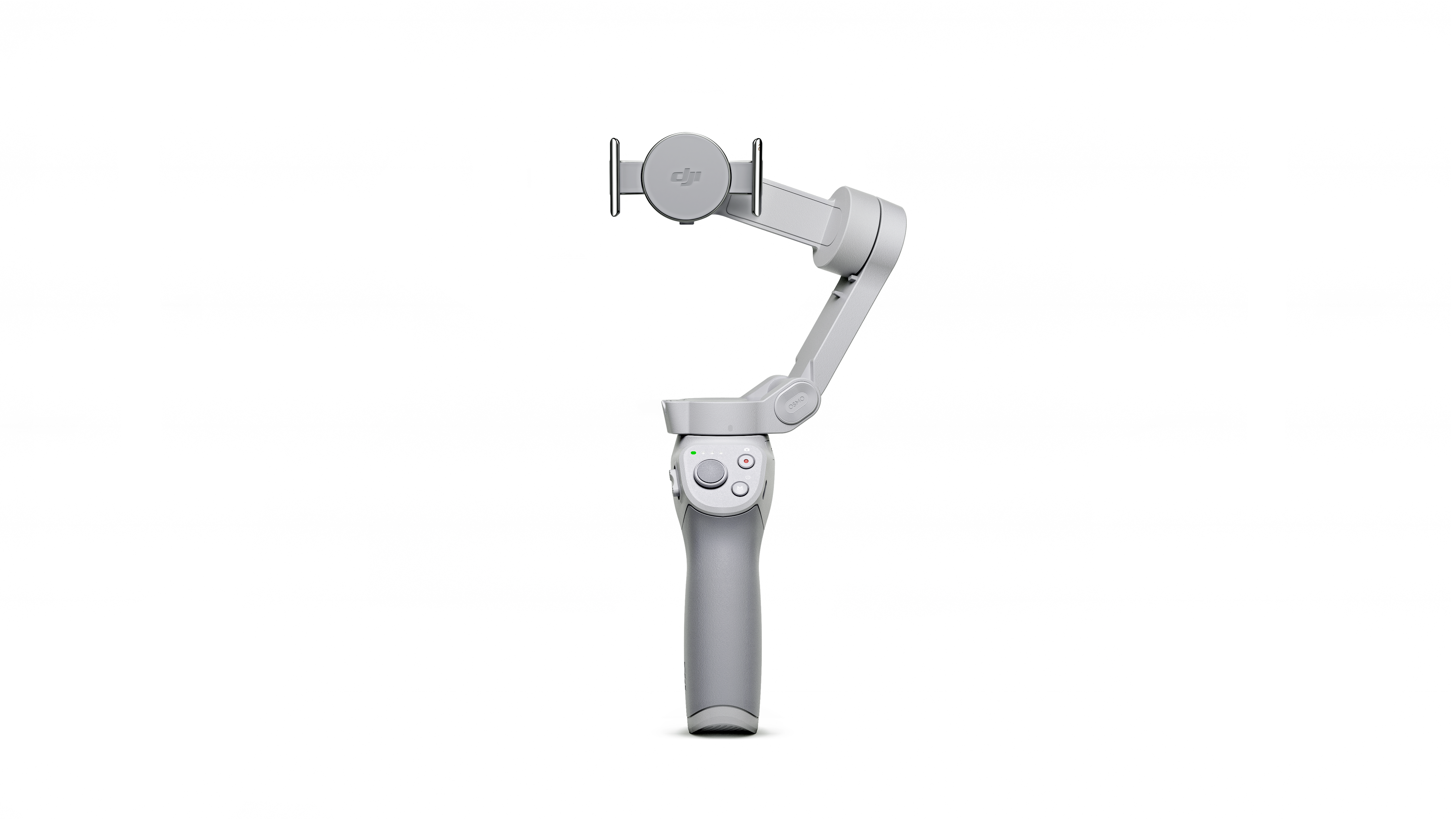Beyond the drones it’s known for, DJI has carved out a nice niche for itself in the camera stabilization market. Building on the technology it has developed for the aerial imaging space, the company’s got a number of products, running the gamut from professional video to consumer smartphone accessories.
Today the company took the wraps off its latest. The new Osmo arrives with a handful of new features and a pithy rebrand. The biggest upgrade for the OM 4 is its new attachment system. The mobile gimbal snaps onto the back of a handset magnetically using a permanent adhesive backing or a slide-on accessory. Your preference will likely be based on how often you plan to use the new accessory.

Image Credits: DJI
When two of our video editors reviewed the Osmo 3 last year, their main quibble was that the product was a bit too heavily focused on consumers and didn’t really offer the kind of options they were looking for in such a product. Understandably so. While a number of pro videographers are looking to add smartphone production to their tool box, the truth is DJI’s main focus continues to be consumers. As such, ease of use is paramount here, including the ability to easily use it with a single hand.
Beyond the new casing, most of the upgrades are new and upgraded shooting modes. Here’s the full break down, per DJI:
- DynamicZoom: A visually appealing cinematic look, the DJI OM 4 automatically adjusts the zoom function to create the dramatic background shift made popular by Alfred Hitchcock.
- Timelapse, Motionlapse, Hyperlapse: Show the passing of time in a sped-up form using TimeLapse; Motionlapse, which adds set movement points for the gimbal; or HyperLapse to physically move with the gimbal. All three modes use Electronic Image Stabilization (EIS) technology as well as the three-axis gimbal for an added level of smoothness. Easily share these creative videos on social media for the world to enjoy.
- Slow-motion: Slow down the world around you in stunning detail with the Slow-motion feature.
- Sport Mode: The DJI OM 4 will respond and follow subjects and movements faster to add a level of action to the scene.
- Panoramas: Choose from three creative panorama options to capture a wider perspective, including 3X3 panorama, 240° panorama and a new “CloneMe” panorama, which allows the user to add multiple versions of a person or subject into one shot for a unique and creative effect.
- Spin Shot Gimbal Movement: Activated in the DJI Mimo app and using the joystick, the gimbal will rotate the phone to give a spinning effect.
- Story Mode Templates: Choose from one of the preset templates to add a creative spin to your content. The DJI OM 4 uses preset movements, music and color palates for quick videos perfect for sharing on social media.

ActiveTrack gets an upgrade as well, here, making it easier to distinguish between and follow a range of different subjects, including people and pets. Users can manually flip between them using the on-board joystick. There’s new gesture control, as well. The feature, borrowed from DJI’s drone line, uses movement to perform tasks like snapping a selfie.
The OM 4 is available starting today, priced at $150.
from TechCrunch https://ift.tt/3aYbJZV
via IFTTT
Comments
Post a Comment